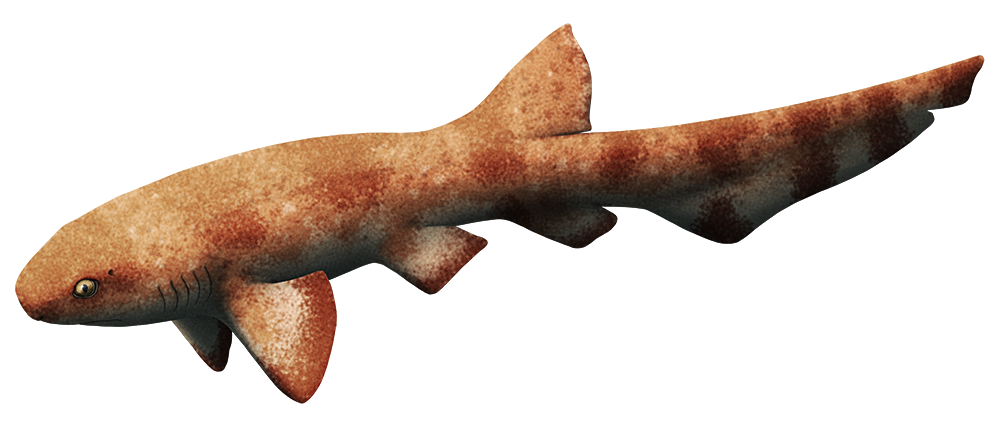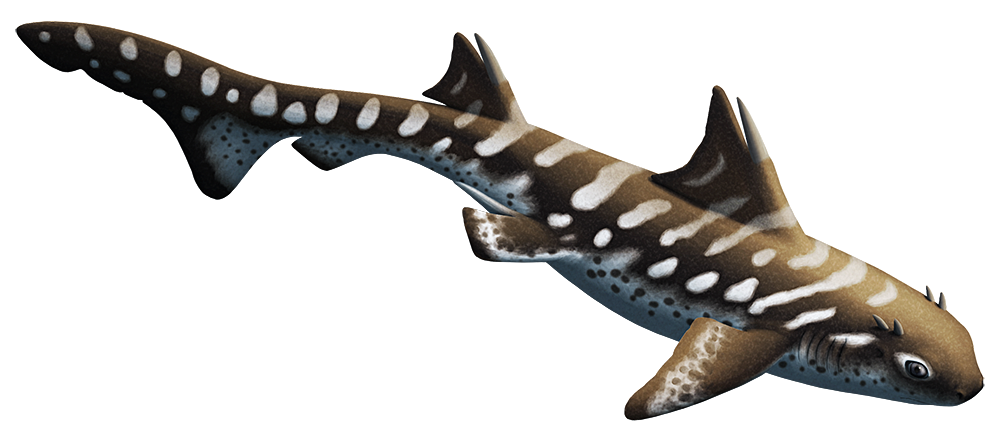First appearing in the Early Permian, about 290 million years ago, the synechodontiformes were an early branch of the neoselachian lineage of cartilaginous fish, slightly closer related to living sharks and rays than to the hybodontiformes featured earlier this month.
They originated in the Paleo-Tethys Ocean and survived through the devastating end-Permian “Great Dying” mass extinction (~252 mya), then went on to quickly spread around most of the world and also survive through the Triassic-Jurassic extinction (~201 mya). During the Jurassic and Cretaceous they became quite common and diverse, taking over some of the niches previously occupied by the hybodontiformes and adapting to a range of marine environments from shallow coastal waters to open ocean.
Most known synechodontiform fossil remains are just their teeth, since cartilage skeletons don’t preserve very often, but there are a few rare body fossils that show they were varied in appearance with differing arrangements of dorsal fins and spines.
Paraorthacodus jurensis here was one of the species known from the Late Jurassic of Germany (~155-150 mya). Reaching lengths of at least 1.3m (4′2″), it had only one dorsal fin far back on its body, along with large pectoral fins and a low asymmetrical tail that gave it a superficial resemblance to the modern sixgill sharks.
Its teeth were close in shape to those of sand tiger sharks, and it may have had a similar lifestyle opportunistically hunting prey just above the sea floor in the waters around the continental shelf and slope. Remains of a chimaera in the mouth and gut contents of a couple of Paraorthacodus jurensis fossils suggest that smaller cartilaginous fish were fairly common elements of its diet.
A few synechodontiformes managed to survive the end-Cretaceous extinction 66 million years ago – but while the ancestors of moderns sharks thrived in the Cenozoic, the synechodontiformes never recovered anything close to their Mesozoic levels of success and instead began to decline.
The last known synechodontiforme was a currently-unnamed member of the Paraorthacodus genus, hanging on in the waters around Antarctica in the Late Eocene (~37 mya). If they managed to survive past that time it probably wasn’t for very much longer, and it’s likely they finally disappeared during another extinction event at the Eocene-Oligocene boundary.



